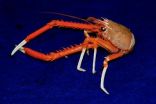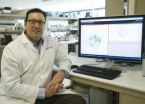(Press-News.org) Montreal, September 6, 2012 – Can a computer "read" an online blog and understand it? Several Concordia computer scientists are helping to get closer to that goal.
Leila Kosseim, associate professor in Concordia's Faculty of Engineering and Computer Science, and a recently-graduated doctoral student, Shamima Mithun, have developed a system called BlogSum that has potentially vast applications. It allows an organization to pose a question and then find out how a large number of people talking online would respond. The system is capable of gauging things like consumer preferences and voter intentions by sorting through websites, examining real-life self-expression and conversation, and producing summaries that focus exclusively on the original question.
"Huge quantities of electronic texts have become easily available on the Internet, but people can be overwhelmed, and they need help to find the real content hiding in the mass of information," explains Kosseim, one of the lead researchers at Concordia's Computational Linguistics Laboratory (CLaC lab).
Analyzing informally-written language poses unique challenges compared to analyzing, for example, a news article. Blogs, forums and the like contain opinions, emotions and speculations, not to mention spelling errors and poor grammar. A summarization tool must address two particular problems, question irrelevance (sentences that are not relevant to the main question), and discourse incoherence, (sentences in which the intent of the writer is unclear).
BlogSum met these challenges with demonstrable efficiency. The researchers developed and tested their tool by examining a set of blogs and review sites. BlogSum used "discourse relations" to crunch the data – ways of filtering and ordering sentences into coherent summaries. BlogSum was measured against prior computational rankings and achieved mostly superior results. In addition, it was evaluated by actual human subjects, who also found it to be superior. Summaries produced by BlogSum reduced question irrelevance and discourse incoherence, successfully distilling large amounts of text into highly readable summaries.
This study is an example of Natural Language Processing (NLP), in which Concordia, through the CLaC lab, is a leader. NLP stands at the intersection of artificial intelligence and linguistics, seeking to enable computers to derive meaning from human language.
"The field of natural language processing is starting to become fundamental to computer science, with many everyday applications – making search engines find more relevant documents or making smart phones even smarter," explained Kosseim.
###
Related links:
Computational Linguistics Laboratory: http://clac.cs.concordia.ca/
Department of Computer Science and Software Engineering: http://www.cs.concordia.ca/
Research funding partner, Natural Sciences and Engineering Research Council: http://www.nserc-crsng.gc.ca/index_eng.asp
Source:
Cléa Desjardins
Senior Advisor, External Communications
Concordia University Media Relations
Phone: 514-848-2424, ext. 5068
Cell: 514-909-2999
Email: clea.desjardins@concordia.ca
Web: concordia.ca/now/media-relations
Twitter: twitter.com/CleaDesjardins
Mining the blogosphere
Concordia researchers develop tools that make sense of social media
2012-09-06
ELSE PRESS RELEASES FROM THIS DATE:
In Rochester, a tale of tainted tattoos
2012-09-06
If you end up with a rash on a new tattoo, you should probably think twice before brushing it off as an allergic reaction or a normal part of the healing process.
A recent study in the New England Journal of Medicine documents 19 cases in the Rochester, N.Y., area – the largest ever reported – of tattoos infected with a type of bacteria often found in tap water. Evidence points to a premixed gray ink, the type used in currently popular portrait or photography tattoos, as the culprit.
Mary Gail Mercurio, M.D., a dermatologist at the University of Rochester Medical ...
Deep-sea crabs seek food using ultraviolet vision
2012-09-06
HOLLYWOOD Fla. — Some deep-sea crabs have eyes sensitive to ultraviolet light, which they may use to snatch glowing plankton and stuff it in their mouths, a new Nova Southeastern University study suggests.
Tamara Frank, Ph.D., a marine biologist and associate professor at Nova Southeastern University's Oceanographic Center, who is the principal investigator of the study, said that crabs living the deep-sea zone --- a pitch dark area at the ocean bottom ---- may be using bioluminescence to help sort out their food.
Duke University marine biologist Sönke Johnsen. Ph.D., ...
CNIO participates in the ENCODE project: A stride forward in biomedical research
2012-09-06
The international Encode project, a collaborative study bringing together hundred of scientists from all round the world, including researchers working at the Spanish National Cancer Research Centre (CNIO), published results yesterday mapping the control and regulation of genome activity. These results indicate a total of four million 'switches' controlling the gene activity of 147 types of human cells and tissue. This map provides us with the first comprehensive vision of the genome as a complex web of interactions, and goes far beyond our initial thinking, which assigned ...
Urban Real Estate Development Firm Launches Digital Brand
2012-09-06
With the impending completion of redevelopment on 1 & 7 Ionia and another property closing in downtown Grand Rapids, Michigan, soon to be announced, urban real estate development firm 616 Development is establishing its brand in the digital space. The company's new website, 616Development.com, offers detailed insights into the company's founding, its core members, key development projects and its unique approach to urban development. Alongside engagement in prominent social networks, the website lays the foundation for the brand's voice in both digital and non-digital ...
Picky penguins: Does mate choice depend on genes that help resist disease?
2012-09-06
NEWPORT, Ore. – Magellanic penguins have a high level of variation in genes associated with the ability to fight infectious disease, but a recent study found that the mechanism the penguins use to ensure that diversity is far from black and white.
Found exclusively south of the equator in South America, Magellanic penguins assemble in large nesting colonies along the coasts of Argentina, Chile, and the Falkland Islands. They typically mate for life, producing clutches of two eggs that are cared for by both parents. While individual colonies can number in the millions ...
NFL players may be at higher risk of death from Alzheimer's and ALS
2012-09-06
MINNEAPOLIS – New research shows that professional football players may be at a higher risk of death from diseases that damage the cells in the brain, such as Alzheimer's disease and ALS (also known as Lou Gehrig's disease), compared to the general U.S. population. The study is published in the September 5, 2012, online issue of Neurology®, the medical journal of the American Academy of Neurology.
The study included 3,439 players with an average age of 57 from the National Football League with at least five playing seasons from 1959-1988. Researchers reviewed death ...
The best strategy to defeat HIV in South Africa
2012-09-06
The World Health Organization is about to roll out a new strategy for AIDS prevention in South Africa, a country where more than 5 million people are infected with HIV. Based on a mathematical model, the WHO predicts this strategy will completely eliminate HIV in South Africa within a decade.
But not so fast, suggests a group of UCLA researchers. Their work challenges the proposed strategy by showing it could lead to several million individuals developing drug-resistant strains of HIV. And further, they say, it will cost billions of dollars more than the WHO has estimated. ...
Study in mice suggests sleep problems may be early sign of Alzheimer's
2012-09-06
Sleep disruptions may be among the earliest indicators of Alzheimer's disease, scientists at Washington University School of Medicine in St. Louis report Sept. 5 in Science Translational Medicine.
Working in a mouse model, the researchers found that when the first signs of Alzheimer's plaques appear in the brain, the normal sleep-wake cycle is significantly disrupted.
"If sleep abnormalities begin this early in the course of human Alzheimer's disease, those changes could provide us with an easily detectable sign of pathology," says senior author David M. Holtzman, MD, ...
Animal study finds anti-HIV vaginal ring can prevent virus transmission
2012-09-06
Population Council scientists have found that a vaginal ring releasing an anti-HIV drug can prevent the transmission of SHIV in macaques. This study provides the first efficacy data on the delivery of a microbicide from a vaginal ring, and indicates strong potential for the success of such rings in women. Microbicides are compounds that can be applied inside the vagina or rectum to protect against sexually transmitted infections (STIs), including HIV.
"This proof-of-concept study confirms that the investment in vaginal rings as a delivery system for HIV prevention is ...
Researchers unlock disease information hidden in genome's control circuitry
2012-09-06
Researchers at the University of Washington have determined that the majority of genetic changes associated with more than 400 common diseases and clinical traits affect the genome's regulatory circuitry. These are the regions of DNA that contain instructions dictating when and where genes are switched on or off. Most of these changes affect circuits that are active during early human development, when body tissues are most vulnerable.
By creating extensive blueprints of the control circuitry, the research also exposed previously hidden connections between different ...
LAST 30 PRESS RELEASES:
Sleeping in on weekends may help boost teens’ mental health
Study: Teens use cellphones for an hour a day at school
After more than two years of war, Palestinian children are hungry, denied education and “like the living dead”
The untold story of life with Prader-Willi syndrome - according to the siblings who live it
How the parasite that ‘gave up sex’ found more hosts – and why its victory won’t last
When is it time to jump? The boiling frog problem of AI use in physics education
Twitter data reveals partisan divide in understanding why pollen season's getting worse
AI is quick but risky for updating old software
Revolutionizing biosecurity: new multi-omics framework to transform invasive species management
From ancient herb to modern medicine: new review unveils the multi-targeted healing potential of Borago officinalis
Building a global scientific community: Biological Diversity Journal announces dual recruitment of Editorial Board and Youth Editorial Board members
Microbes that break down antibiotics help protect ecosystems under drug pollution
Smart biochar that remembers pollutants offers a new way to clean water and recycle biomass
Rice genes matter more than domestication in shaping plant microbiomes
Ticking time bomb: Some farmers report as many as 70 tick encounters over a 6-month period
Turning garden and crop waste into plastics
Scientists discover ‘platypus galaxies’ in the early universe
Seeing thyroid cancer in a new light: when AI meets label-free imaging in the operating room
Neutrophil-to-lymphocyte ratio may aid risk stratification in depressive disorder
2026 Seismological Society of America Annual Meeting
AI-powered ECG analysis offers promising path for early detection of chronic obstructive pulmonary disease, says Mount Sinai researchers
GIMM uncovers flaws in lab-grown heart cells and paves the way for improved treatments
Cracking the evolutionary code of sleep
Medications could help the aging brain cope with surgery, memory impairment
Back pain linked to worse sleep years later in men over 65, according to study
CDC urges ‘shared decision-making’ on some childhood vaccines; many unclear about what that means
New research finds that an ‘equal treatment’ approach to economic opportunity advertising can backfire
Researchers create shape-shifting, self-navigating microparticles
Science army mobilizes to map US soil microbiome
Researchers develop new tools to turn grain crops into biosensors
[Press-News.org] Mining the blogosphereConcordia researchers develop tools that make sense of social media


